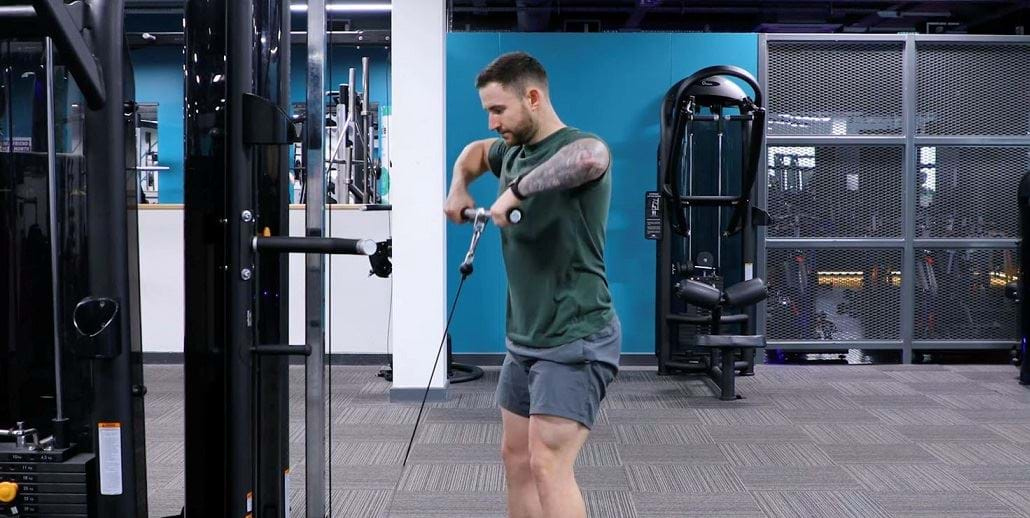Cable Upright Row
What Is A Cable Upright Row

The cable upright row is a variation which uses a cable machine and straight bar attachment to provide the resistance for this exercise. Like all upright rows, the deltoids, trapezius, rhomboids, and biceps are involved in moving the load.
Using a cable machine places the muscles under tension for the whole movement and places a greater emphasis on the eccentric portion of the exercise compared to when using free weights. This increases the total time under tension and can deliver bigger strength and muscle gains.
Check out our other upright row variations: barbell upright row, dumbbell upright row
Commonly Asked Questions On Cable Upright Rows
The upright row is a heavily debated exercise in the fitness industry with some arguing that it puts the shoulder joint at risk of injury due to the positioning. However, maintaining correct form and opting for a lighter load with higher reps can help to prevent shoulder impingement.
The cable upright row mainly targets the deltoids, with a greater focus on the medial delts and the upper back muscles, namely the traps. The rhomboids, biceps, and core are also engaged during this exercise.
The cable upright row is an effective way to build strength in the shoulders and upper back. Using a cable machine to provide the resistance means the muscles are placed under tension for the entire exercise, making this variation more effective.
Cable Upright Row Tips
When performing the cable upright row, stand close to the cable machine so that the bar can stay close to your body throughout the movement. Standing too far away will change the line of pull, which can put the shoulders under greater stress and target the wrong muscle groups.
Try to keep the torso upright as you lift and lower the load to ensure tension remains on the deltoids and upper back throughout. If you’re struggling to remain stable lighten the load you are lifting to gain the most out of the exercise.
How To Do A Cable Upright Row
Set up on a cable machine by putting the pulley on the lowest setting and adding a straight bar attachment.
Grip the straight bar shoulder with hands width apart using a pronated grip, so that your palms are facing downwards.
Engage your core and pull your shoulder blades back, then begin the movement by lifting the straight bar upwards, allowing your elbows to come out to the sides and keeping the bar close to your body.
Raise the straight bar until it is at mid chest height or shoulder height based on how comfortable the shoulders feel.
Revert the movement by slowly lowering straight bar to the starting position.
If you’re not sure if any of the above exercises are suitable for you, please consult your doctor before you start it. Need guidance on how to perform the exercise? Ask a personal trainer at your gym.